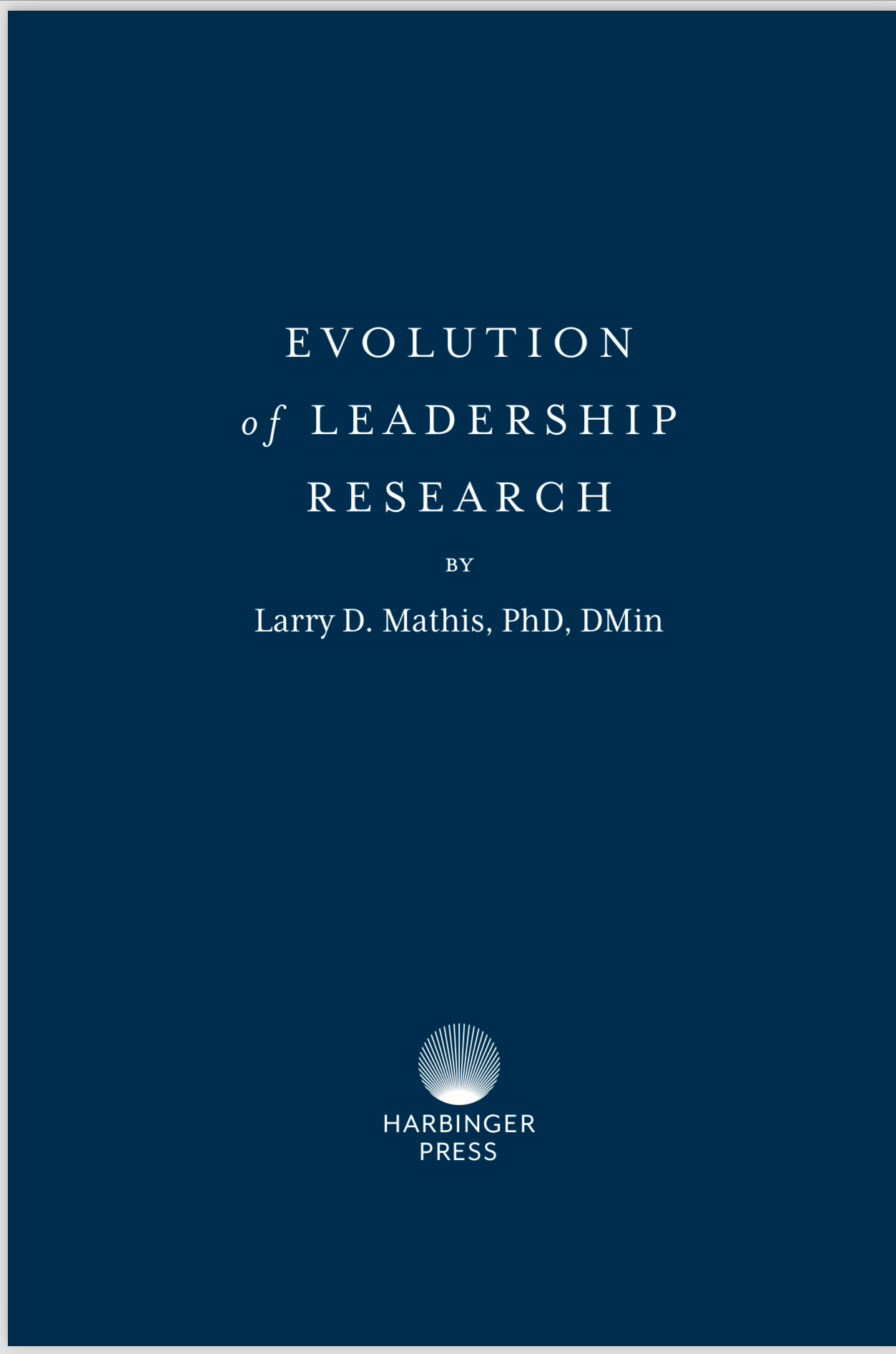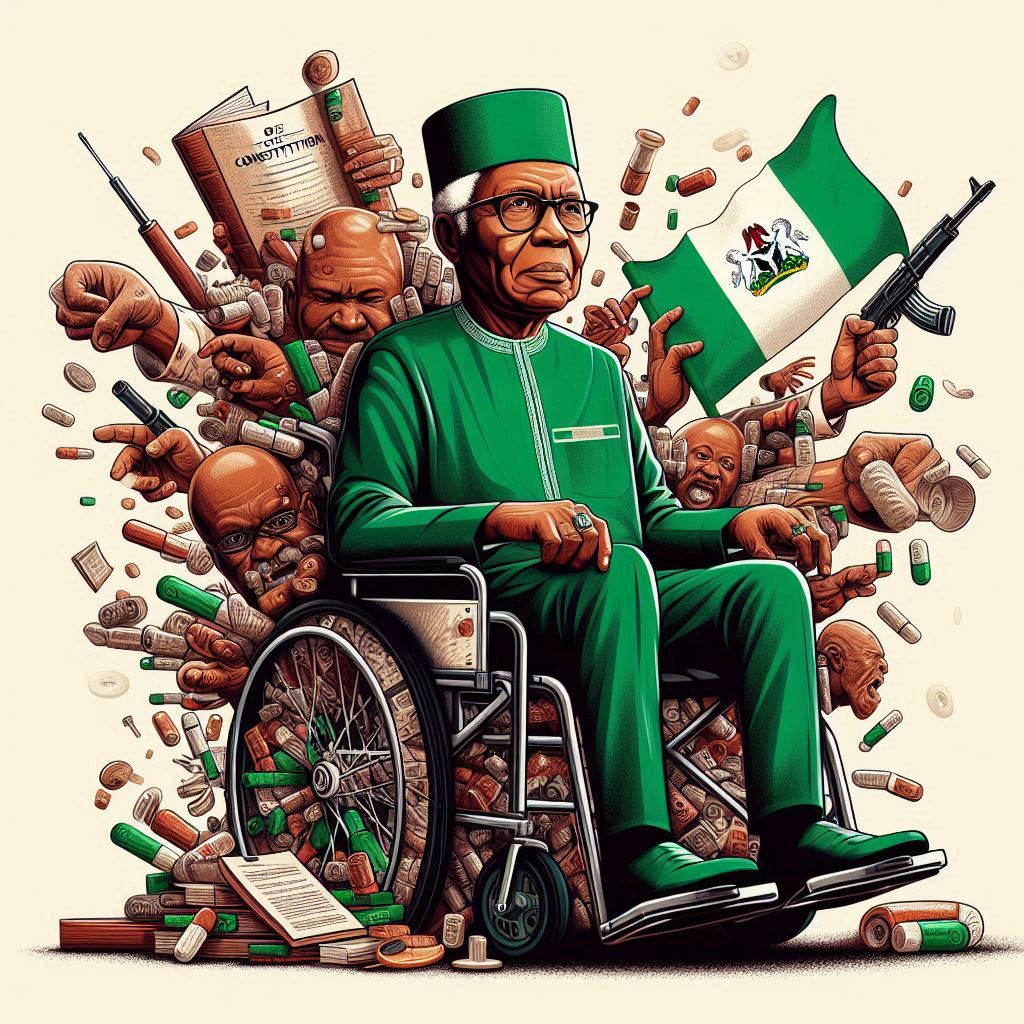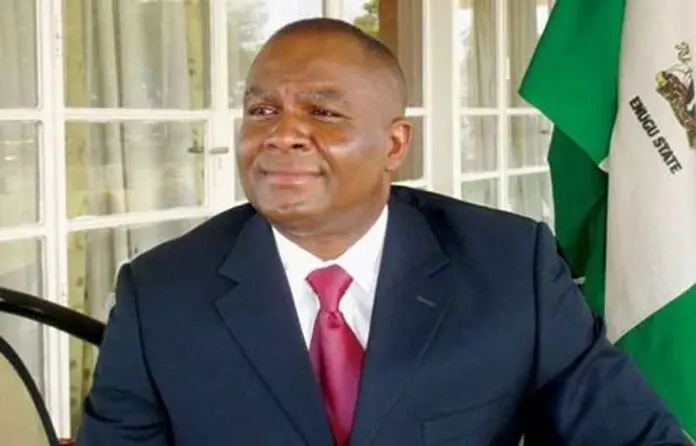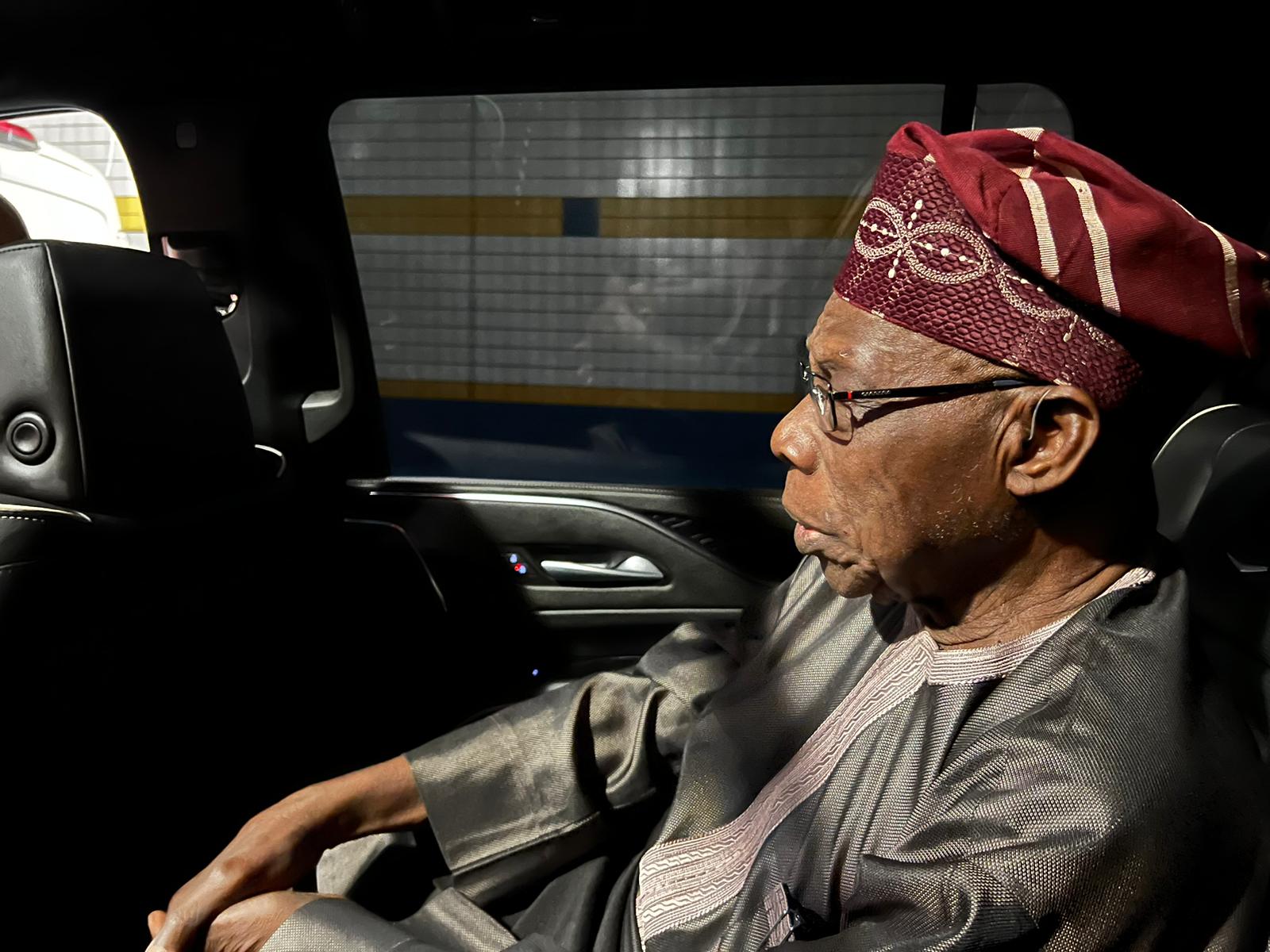PART 1
Introduction
Participants of National War College Course 14;
Distinguished Ladies and Gentlemen.
First, I would like to thank the Commandant, Rear Admiral Anthony Isa, the former Deputy Commandant, Major General Nuhu Bamalli, and his successor, Major General S U Atawodi, for having me back as a guest lecturer this year. My topic today is titled, “Inter-service Relations: Imperatives for Jointness".
The scope is as follows,
Define Service Rivalry, including an understanding of factors, which nurture and promote it.
Discuss “Jointness.”
Appreciate why Service rivalry is topical in Nigeria today.
Understand benefits of service rivalry - the link between rivalry, unit and service cohesion, professionalism and Military effectiveness
Appreciate risks and outcomes of service rivalry in war and peacetime (with historical examples from Nigeria and a select group of other countries)
Know how Service Rivalry has been exploited for g ood, bad and ugly reasons by Junior, Intermediate and Senior Service Leadership as well as supervising Ministries of Defence and Governments
Discuss possible solutions to negative aspects of service rivalry at Intra-service, Inter-service, Governmental and Societal levels, using some historical examples of how the problem has been addressed in other societies
Apply insights gained from the presentation to contemporary Nigerian problems.
Let me state from the outset that the “services” I shall focus on in the course of this discussion belong to two sub-groups, namely, the “Military” on one hand, i.e., the Nigerian Army (NA), Nigerian Navy (NN), and Nigerian Air Force (NAF), and the “Police” on the other, i.e., the Nigeria Police Force (NPF). We will discuss “rivalry” and “jointness” not only from the intra-Military standpoint, but also as an issue of Military-Police relations. When necessary I shall highlight the importance of cooperation between the Military and civilian components of the Ministry of Defence. Please note that the issues raised can also impact a number of other security services that are, nevertheless, beyond the scope of this lecture.
What is Service Rivalry?
Service rivalry is a state of competition, contention, or emulation within and between Services for something of perceived value to the contending interests. It could be tangible or intangible recognition and other perceived "benefits to self-esteem". It can be positive (good natured) or negative (associated with deleterious consequences such as the inability to cooperate optimally in support of National Defence and Security objectives). When it occurs between Services, it is described as “Inter-Service” rivalry e.g. between the Army and Navy, Army and Air Force, or Navy and Air Force. Rivalry may also exist between Military services (singly or jointly) and the Police or other internal security agencies. When it occurs within a Service, it is known as “Intra-Service” rivalry.
Intra-Service Rivalry
Examples of Intra-Service rivalry and its negative effects abound. Such rivalry can exist between individuals, or combat corps like the Infantry, Armour, Artillery, etc. or among infantry units, like the Nigerian Brigade of Guards and other Presidential Guard regiments in Africa. Sometimes, such special regiments have been viewed with envy or suspicion by their fellow units for one reason or another, usually because they are felt to be pampered or that officers and men within them have a “chip on their shoulders.” In Nigeria, for example, the Brigade of Guards of the seventies under then Colonel (later Major General) JN Garba attracted mixed emotions from other Army infantry units. On the other hand, in the eighties and early nineties, the Armoured Corps, following a spate of involvement in repeated coups d’Etat also attracted mixed emotions from other corps. Well known wartime clichés like “The combat arm of decision” soon became synonymous with successful coup plotting. At one point during the regime of the late General Abacha (who was an Infantry man), this resulted in a retaliatory series of deployments to border villages and an order to have their Tank tracks removed!
A more classic and telling example, however, dates back to the Nigerian Civil War when fierce rivalry existed between the 1st, 2nd, and 3rd divisions of the Army. Rivalry took the form of inter-personal friction, envy, gloating at the failures of others, refusal to collaborate for joint operations, failure to communicate, competition for logistic stores, inappropriate showmanship, outright disregard of orders from Army HQ, etc. Many friendly fire incidents that were dismissed as being “accidental” can be traced to such rivalries and the lack of joint planning and coordination. Most importantly, lack of jointness has been held responsible for the long duration of the war, with its tragic consequences for the civilian population of then Biafra, including children.
Another form of intra-service rivalry is driven, not by the type of service but by the social status of the officer training academy through which various officers entered the service (e.g. Olatta versus Harar Military academies in Ethiopia). In Ethiopia, officers of modest upbringing like then Lt. Col. Haile Mengistu Mariam were trained at Olatta while those of royal and aristocratic bearing were trained at Harar. Over the years, bitter rivalry devel oped between graduates of these two academies with accusations of favoritism in postings and deployments regularly thrown around. The conventional wisdom was that Olatta graduates had a much higher likelihood of being sent to the warfront to fight against Eritrean separatists. When Mengistu seized power in 1974, many graduates of the academy at Harar were executed.
Yet another form of rivalry may develop on the basis of the type of officer commission. In Nigeria, for example, the coup attempt of February 1976 was at least in part driven by such rivalry between Short-service and Regular commissioned officers. Some countries outside Africa have experimented with various combinations of academies and commissions, usually as a wartime expansion exigency. Examples include Britain (RMA Sandhurst for regular and Mons/Eaton Hall for short service), Australia (RMC Duntroon for regular and OCS Portsea for short service), etc. In most such situations the separate short-Service institutions have since been closed down.
In countries like the United States, where there are many Police Forces (municipal, local, State, Federal, etc.) intra-service Police rivalry exists, driven mainly by personal and institutional ego and disagreements over jurisdiction..
Inter-Service Rivalry
Over time, ever since the earliest forms of warfare, various services (initially the Army and Navy, but most recently the Air Force) have evolved historic and traditional roles in land, sea and air warfare and society. They each have their etiquette, customs, ceremonies, and traditions which breed a common set of core values. As observed by Mack and Connell,
“….traditions, ceremonies, customs, and usage exert a profound influence upon human behavior. This effect is particularly marked in such professions as the Military organizations which – because of imposed discipline – lend themselves to passing on and perpetuating the more venerated customs, heroic traditions, and dignified ceremonies. Such stimuli when appreciated and properly applied engender ideals and service esprit de corps of incalculable value.”
The concoction of tradition, courage and pride creates an exclusive identity and code of conduct and ethics which feeds Service esprit de corps (also referred to as the “spiritual cement” of a Military unit or service.) It has bee n well documented to inspire men to greater heights under wartime stress. Many former prisoners of war, for example, have attributed their ability to withstanding enemy torture to their innate desire to uphold their service traditions and live up to the standards set by servicemen who served before them. Similarly, in the heat of battle, when men in small units fight for each other, ordinary men have done extra-ordinary things. This dynamic of ancestral worship enhances cohesion, professionalism and Military effectiveness. Furthermore, constructive or healthy rivalry can lead to positive outcomes at corporate level. Although the exception rather than the rule, some great technological innovations have resulted from such rivalries between services.
Unfortunately, differences in Military etiquette, customs, ceremonies, traditions and operational doctrine, can be aggravated by unhealthy competition (within and between services) for status, force levels, roles, functions, and missions. Various factors may exacerbate the competition, the most important of which is a limited Defence budget. Others include “group think”, historical factors such as size, identity (e.g. fear of being swallowed by bigger services as in India), public ignorance of roles o f services and lack of integrity and/or unethical conduct on the part of one or more services. Other contributory factors include personality clashes and turf politics. When there are no shared values, based on joint etiquettes, customs, ceremonies, traditions and operational doctrines, servicemen and women intuitively default to their respective parochial services. This can lead to wasteful duplication and undermine national security. Several incidents of “friendly fire” in war have been attributed to this phenomenon.
It must, however, be noted that inter- service rivalry has sometimes been deliberately nurtured b y governments. One of the more classic foreign examples was the German Fuhrer Adolf Hitler, who openly encouraged rivalry among various elements of the German High Command, hoping to gain from it by ensuring that no coordinated plot could succeed against him.
The case of the Police
The word “Police”, on the other hand, initially came into usage in 18th century France. The word is derived from the French and Greek word, politeia, which refers to government or administration. The word, Constabulary, which the Police is called in some countries, is derived from “Constables” which is what Policemen, appointed by Local lords and nobles, were called back in the 5th century. Before that time, as exemplified by the ancient Roman Empire, the Military was responsible for the maintenance of law and order.
Why is Service Rivalry topical in Nigeria today?
From the standpoint of Military-Police relations, the event that forced service rivalry back into contemporary public consciousness was the clash, on October 4, 2005, between soldiers at Abalti Barracks in Lagos and Police. At least five individuals were confirmed dead, well over fifty vehicles burnt, and billions of naira of property (including the' command headquarters of Police Area “C”) destroyed. Quite a number of criminal suspects escaped from custody and numerous Police exhibits for ongoing criminal prosecution, lost.
Spates of official inquiries were launched, within the Army, at the level of the Ministry of Defence, State and Federal governments, as well as the National Assembly. Public statements by government officials since then, including the President, betray deep anxiety about the incident. Many newspapers have written editorials about it. However, although much less common, violent clashes between the Military (Army, Navy or Air Force) and Police have occurred before that (going all the way back to the seventies). Previous regimes have also investigated such incidents. But the worry is that since the advent of civil rule in 1999, relations between the Military and Police have worsened. In 2004, for example, there were violent clashes between Air Force personnel a nd Police in Lagos and Benin City. Just last week there were reports of yet another violent Army-Police clash in Bauchi and a clash between the Navy and Police in Sapele.
The most common scenarios for these clashes include traffic Police demanding vehicle particulars and driving licenses from Military personnel or seeking to search their private vehicles; complex “protection” deals between servicemen in uniform who ride for free in public transport vehicles and then proceed to protect their hosts from bribe seeking Police men; or the desire of Military personnel to retrieve friends and colleagues who have been arrested by the Police for one reason or another. Sometimes, it is a desire to “avenge” perceived dishonor suffered at the hands of the Police. Another potential for crisis is when the Police engages in hot pursuit of suspects who for one reason or another then take refuge inside Military barracks. One particular scenario that is not fully appreciated by the public revolves around the fact that in order to make ends meet many junior soldiers own and operate motorcycles (a.k.a. “Okada”) with which they engage in the business of public transportation after normal working hours. This provides a lot of opportunities for conflict with traffic policemen.
Well-meaning Nigerians, including active and retired Military and Police personnel, have weighed in on the issue and expressed various views on causes and solutions. One interesting hypothesis has it that the fact that the Police and Army have overlapping historical origin, i.e. “Glover’s Hausas” of 1863, is the cause of their unending sibling rivalry. In truth, the Nigeria Police Force, like the Army, was derived from a concoction of different local consular, colonial and protectorate constabulary forces all over Nigeria, not just the Lagos group. However, the very first 25 man Police unit was established in Lagos in 1861. This unit evolved into the “Armed Police Force”, which, after merging with Glover’s Hausas, became known in October 1863 as the “Armed Hausa Police Force” (Constabulary) because of the preponderance of Hausa speaking ex-slaves. Clear separation of the “Civil Police Force of Lagos” from the “Armed Hausa Constabulary” did not occur until the passage of the Police Ordinance No. 10 of 1895. The “Armed Hausa Constabulary” was later folded into the fetus of the future West African Frontier Force between 1898 and 1901. That unit is known today as the 4th Guards battalion of the Army. This overlapping sequence of events has led some (particularly Police Officers) to argue that the Police is a “senior” service to the Army, in spite of the Army’s subsequent emergence as the dominant force for internal security during the troubled years after the January 1966 coup. There is also the fact that the Police, during the colonial era, were often used militaristically. Individual Policemen and Police units were drafted for action during the world wars, for example.
However, some active duty Military and Police leaders claim current rivalries are only a problem at lower ranks. Retired Police officers – who tend to speak more freely - have blamed the long period of Military rule and institutional subordination of the Police to second class status. Some Military officers have blamed tensions on “Police inferiority complex” while others have argued that it is a “superiority complex” encouraged by the advent of civil rule and the withdrawal of soldiers to the barracks. Some newspapers allege, on the other hand, that certain “benefits” enjoyed by servicemen in uniform (such as free public transportation) since the civil war are to blame. Government officials have expressed hope that arranging sports competitions between security services will channel rivalries positively. Personally, I doubt that this will be effective unless accompanied by more serious measures. Be that as it may, the cacophony of voices (right or wrong) reveals the level of national anxiety on the subject.
Insights gained from the Belongingness Hypothesis in Social identity theory may help shed light on some of the bureaucratic and culture clashes between Military and Police units. Human beings basically need to belong to social groups to avoid feeling unhappy and lonely. Group beliefs and attitudes are engendered and reinforced by comparing oneself to others. This manifests as “Ingroup-outgroup” tension between organizations. This model has been used by some to explain Army-Police tensions in Indonesia.
From the perspective of inter-service rivalry within the Military, the phenomenon is less well appreciated, and, at some level, is not even acknowledged to exist by the Nigerian public. However, it certainly does, albeit expressed differently. Efforts in recent times to update Nigeria’s Defence Policy, review Force levels, structure, roles and missions have betrayed stubborn tendencies to protect various domains, not only among individual Military services, but also between Military an d civilian components of the Ministry of Defence. One particular innovative proposal, for example, to create permanent “Unified Commands” met with resistance. As one middle ranking Army officer put it to me, “I cannot imagine taking orders from a Naval officer in combat while I am on land.”
However, the phenomenon goes all the way to the top with the recurrent debate over the command, control, and budgetary prerogatives of individual Service Chiefs in relation to the Chief of Defence Staff. On another level, oblivious to the fiscal implications and need for greater Military efficiency, officers with an eye on individual career opportunities have lobbied for an even greater number of service-specific Army divisions, Air and Naval commands. Such lobbying is usually well couched in terms that appear sensitive to “national threats” but which on closer scrutiny, reveal an undercurrent of service rivalry, personal aggrandizement and a desire to control funds.
Over the years, in various countries, including Nigeria, service rivalry has been exploited for good (force generation), bad (service parochialism) and ugly reasons (unethical conduct, outright violence, bureaucratic and political mischief) b y junior and senior service leadership as well as supervising Ministries of Defence and Governments. Obviously, as a tool for force generation, service rivalry can enhance unit and service cohesion, professionalism and Military effectiveness. But there is a real potential for negative outcomes in war.
What is Jointness?
The primary purpose of the Military is to prepare to fight and win wars, defend against foreign aggression and/or violation – of any kind - of air, land and sea borders. In recent times, the dimensions of the battle space have expanded to include outer space and cyberspace, while the speed and lethality of warfare has increased tremendously. At the same time, the contemporary political environment and world order increasingly emphasizes “national interests” rather than merely “territory” in national security calculations. Although by no means a new phenomenon, low-intensity warfare, also known as “Military operations other than war”, have assumed greater significance. Servicemen and women, organizations, weapons and fighting concepts, therefore, have had to adapt to these dynamic realities, if they must win.
According to Jane’s Dictionary of Military terms, the word “joint” refers to “activities, operations, organizations, etc., in which elements of more than one Service of the same nation participate. “ A good example is the Joint Task Force in Nigeria’s Niger-Delta (“Operation Restore Hope”). It is to be distinguished from the word “combined” in which elements of “two or more forces or agencies of two or more allies” participate. Many multi-national UN peace operations, for example, are in the latter category.
Based on a core requirement for unity of effort at operational command level, the notion of “jointness” is conceptualized by General Colin Powell’s statement to the US Armed Forces that "We train as a team, fight as a team, and win as a team."
I will go further to submit that “jointness” encompasses “recruitment as a team, equipment acquisition as a team, training as a team, fighting as a team, winning as a team, and taking credit or blame for success or failure as a team.” Its essence, in my view, is that the nation’s Military or security “tool-box” be bigger than the sum of its parts. In practice, however, complete jointness is an ideal that has not been attained by any Military system in the world.
Types of command
Before we review the history of Joint operations and imperative for jointness, let us clarify the organizational structure of various types of command.
Joint Command – This is also known as “command by committee.” In this arrangement, Service Chiefs sit on a “Joint committee,” overseen by a coordinating Staff officer who has no direct command authority over the individual services and their chiefs. Short of imposition from higher levels, any decision on issues affecting all three services can only be reached by consensus among the Chiefs. The operational weakness of this arrangement in war is obvious. This was the arrangement in Nigeria before the January 1966 coup. The Chief of Staff, Nigerian Military Forces, was the late Brigadier B. Ogundipe.
Unified Command – In this set-up, on issues affecting more than one service there is an overarching commander who has operational authority over individual service chiefs and is empowered to plan and implement defence policy. Other than a very small pe rsonal staff, however, the unified commander has no fully committed operational staff support. Instead, staff officers are drawn from each of the services to create a “joint staff” and the unified commander carries out “joint” operations through the operational staffs of individual service chiefs. Nevertheless, each service chief retains a parallel administrative chain of command and right of access to higher order authorities. In Nigeria, for example, all the Service Chiefs are members of the National Defence Council – which has the “power to advise the President on matters relating to the defence of the sovereignty and territorial integrity of Nigeria.” On the other hand , only the Chief of Defence Staff sits on the National Security Council - which has the “power to advise the President on matters relating to public security including matters relating to any organisation or agency established by law for ensuring the security of the Federation”. The Joint Task Forces (Niger Delta and Bakassi) report directly to him. Furthermore, once troops in any configuration are deployed outside Nigeria he does assume direct command responsibility. Initially conceptualized in the 1979 constitution, and rehashed in the 1999 constitution, this is the current hybrid arrangement (i.e. neither fully joint nor unified) in Nigeria. The current Chief of Defence Staff is General Alexander Ogomudia.
Supreme Command – In this arrangement, the supreme commander, through his own joint planning and operational staff, can direct operations all by himself, bypassing individual service chiefs. This was the arrangement during the Nigerian crises and civil war (1966 – 70.) The Supreme Commander from January until July 1966 was Major General JTU Aguiyi Ironsi. The Supreme Commander after July 1966 was Lt. Col., later General Yakubu Gowon. The notion of a “Supreme Commander” was controversial during the Nigerian crisis. It was a key item of contention during the Aburi conference of January 1967 in the run-up to the Nigerian civil war. Although there was an initial concession on the issue which led to the decision to regionalize Military forces after Aburi, progressive lack of confidence between the eastern region (under Lt. Col. CO Ojukwu) and the federal government, led to the declaration of a state of emergency on May 27, 1967 and assumption of full powers by then Lt. Col. Yakubu Gowon. Three days later Biafra declared secession. During the civil war, Gowon directed operations independent of Army HQ, dealing directly with Divisional commanders (Shuwa, Adekunle and Mohammed), who for the most part, refused to cooperate with one another, or their course mate (Bisalla) who was the second wartime Chief of Staff (Army), thus considerably prolonging the 30 mon th war. In July 1975, when General Gowon was overthrown in a Military coup, one of the first acts of the new regime was to change the title of the “Chief of Staff, Army” to “Chief of Army Staff” stripping the Commander-in-Chief of direct operational command authority over the Army in particular. Instead a “command by committee” was substituted in which the “Chief of Staff, Supreme Headquarters” coordinated the Service Chiefs but had no operational authority over them. The Chief of Army Staff acted as Chairman, Joint Chiefs by default. Inter-service rivalry inevitably thrived in this set-up, leading then Chief of Air Staff, Air Vice Marshall John Yisa Doko (rtd), to propose the creation of the office of Chief of Defence Staff (CDS). We shall return to this later.
Continued..............
RETURN

Review of “Evolution of Leadership Research by Larry D. Mathis, PhD, DMin “ The book was first brought to my attention by Shawn Mathis, Ph. D...

This article was first published on November 12, 2024, on https://constitutionaldiscourse.com/a-game-for-the-throne-the-nigerian-constitution-and-the-...

Civil Society and Social Movements: The Role of Activism and Radical Politics in Deepening Democracy in AfricaByOtive Igbuzor, PhDFounding Executive D...

Chimaroke Nnamani: Progenitor of Ebeano politics at 64By Paul MumehChimaroke-Nnamani2.jpg 88.87 KBHate or love him, Senator Chimaroke Nnamani; fo...

Background To The Recent Nigerian ElectionsGeneral Obasanjo more than just a "friend" of the AmericansElizabeth Liagin is an independent journalist wh...